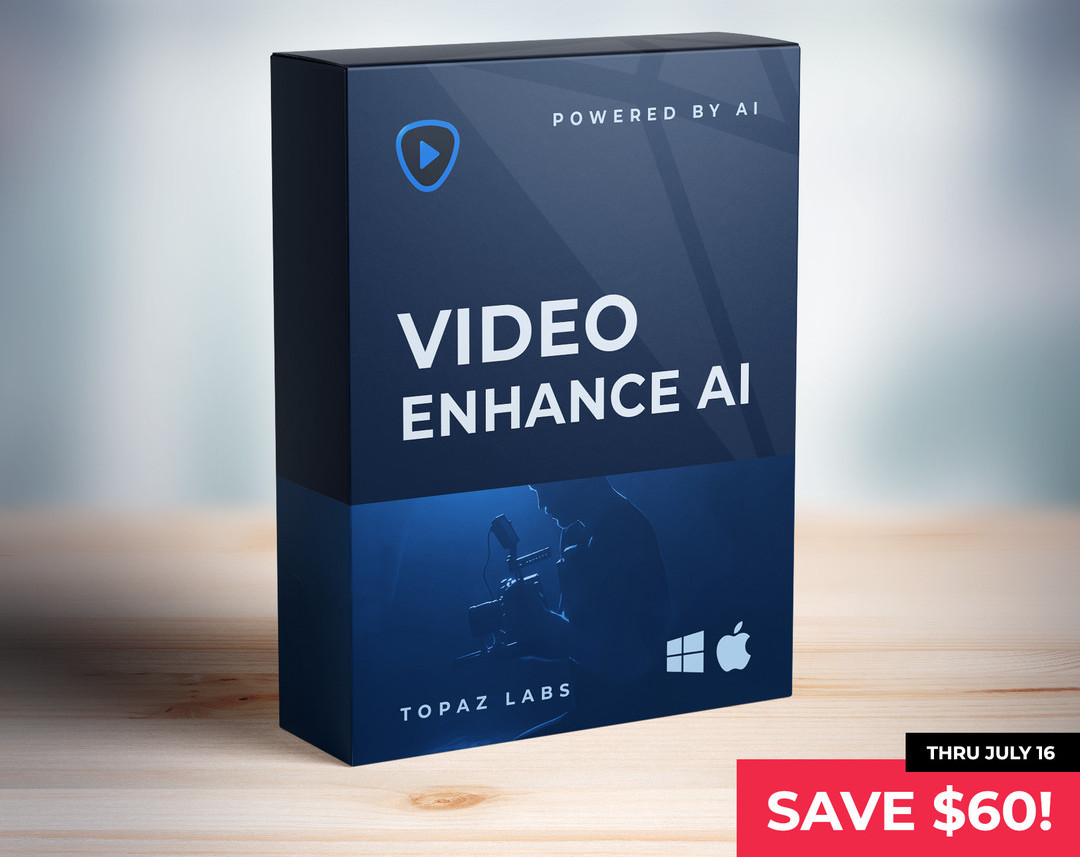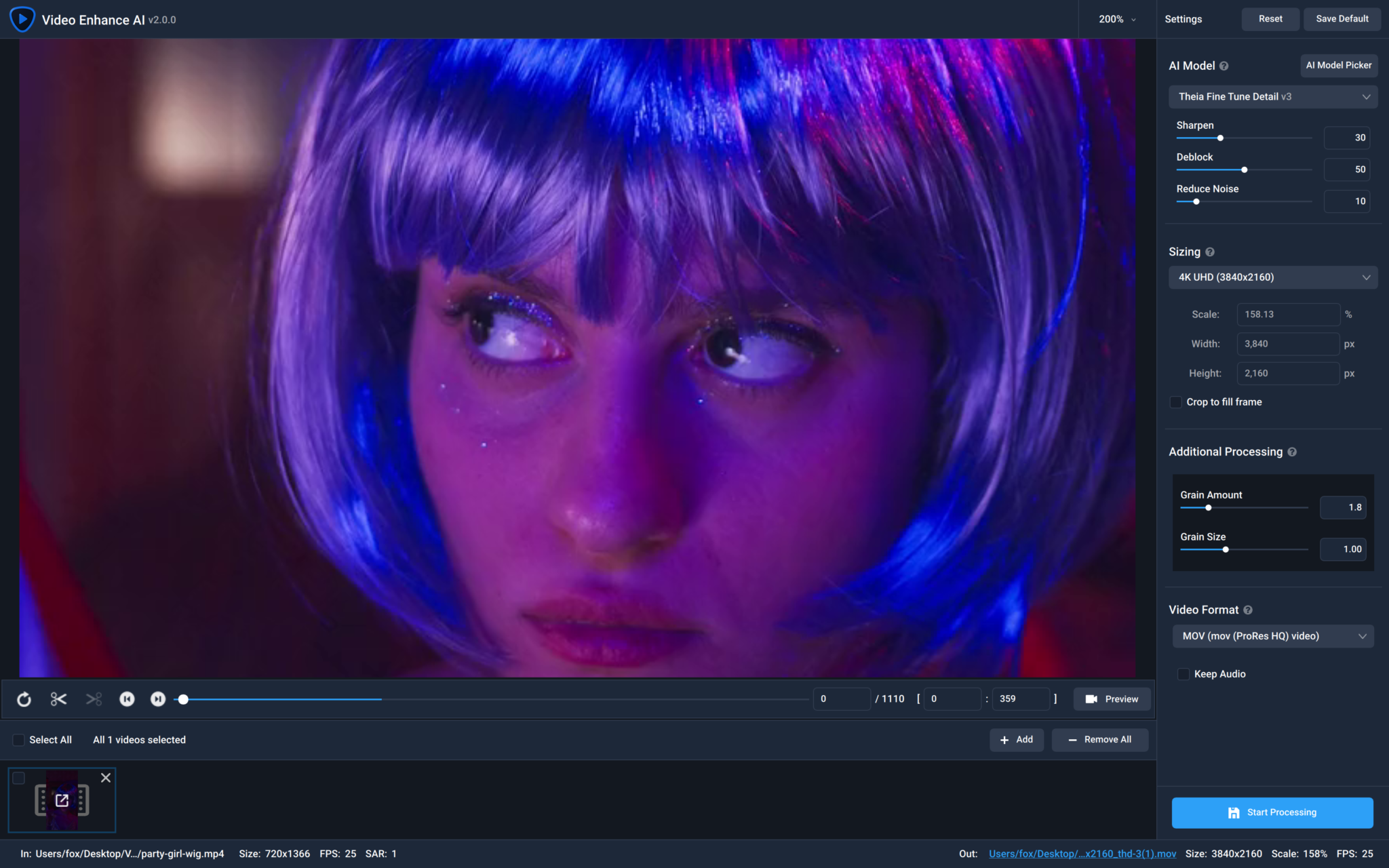

Not all frame rate conversions are created equal. Do you see how much smoother the drone footage is as it races over the plants and shrubs? Next, I used the Chronos model in Video Enhance AI to perform a frame rate conversion to 60 fps and placed it on the right. I recorded this drone clip at 24 fps, and the source footage is on the left. Additionally and ironically, many viewers argue that 60 fps footage looks sharper and less jittery because of the smoother motion conveyed at this higher frame rate.Watch the video below to see how a higher frame rate affects the quality of motion. Fast motion looks more natural and less jarring at these higher frame rates. The experience of watching a 60 fps clip on a 60 Hz display (virtually all computer monitors, smartphones, and TVs) can be very pleasing. As I previously mentioned, you can portray motion more smoothly as you increase the frame rate of your clip. You may be wondering where the higher 60 fps frame rate factors into this spectrum. The PAL television standard is 25 fps in Europe because they use a 50 Hz electricity frequency. US Broadcasters and news channels have long used the NTSC standard of 30 fps (technically 29.97 fps) for television, but that has more to do with the 60 Hz electricity frequency we use. For example, cinematographers will often film at 24 fps because of the cinematic look they can achieve with it. Chronos can also apply up to 2000% slow motion to your footage as illustrated below.Ĭreators tend to use specific fps values based on the intent of the footage and what the desired aesthetic needs to be. Fortunately, Video Enhance AI has Chronos, a new AI model specifically built for frame rate conversion that generates incomparably smooth, realistic footage.

Historically, a creator would have to run a conversion process to increase the frame rate or upscale the resolution, but the output almost always significantly suffered. In other words, the camera can either record in 4K resolution with a lower frame rate or HD at 60 fps. It's also increasingly more common for creators to record footage at 60 fps so that they can slow motion down when conforming it to their project's native timeline.The biggest problems often occur when creators forget to set their cameras to record at 60 fps (this has happened to me more times than I'd care to admit 😅), don't have cameras capable of recording at 60 fps, or must compromise resolution to record at that higher frame rate. Footage with a lot of motion, such as sports or video games, plays back much more smoothly at a higher frame rate, like 60 fps. Today, one of the most popular and commonly used frame rates is 60 fps, and there are several good reasons for it. Unlike the perception of increased image quality solely based on more megapixels, increasing the frame rate of your footage has a material impact on its output.

Impressive stuff.Why you would want to convert video to 60 fpsĪn integral component of digital video and video games is the frame rate, commonly represented in frames per second or fps. The system doesn't even seem to have been confused by all the fine sparks either.

Of all things that would be incredibly difficult to process, fireworks would have to be the most difficult. If you are a cynic you might want to check out the demo below and skip to 53 seconds in where a fireworks display is tackled with what looks like apparent ease. PR is one thing, and traditionally a company might use easy footage to showcase such abilities, such as a skateboarder against a plain blue sky to minimise warping. We suspect this is due to the fact that this is an AI/machine learning system at work rather than just a straight frame interpolation system like you’d get traditionally. The results that Topaz has posted are impressive, exhibiting none of the sorts of warping issues that you often get with Optical Flow style systems. The new Chronos model has been developed to enable both the creation of slow motion or to convert between frame rates whilst keeping the video duration the same.
TOPAZ VIDEO ENHANCE AI FRAME RATE SOFTWARE
Now the software has been upgraded with two new AI models, new footage preview options, and a brand new preset manager. Far from being snake oil we found that the software was the real deal, breathing genuine new life into old footage. We were surprised at just how good Topaz Video Enhance AI is when we reviewed it a few months back. Topaz Video Enhance AI has been updated to version 1.3, and it includes some significant new abilities.


 0 kommentar(er)
0 kommentar(er)
